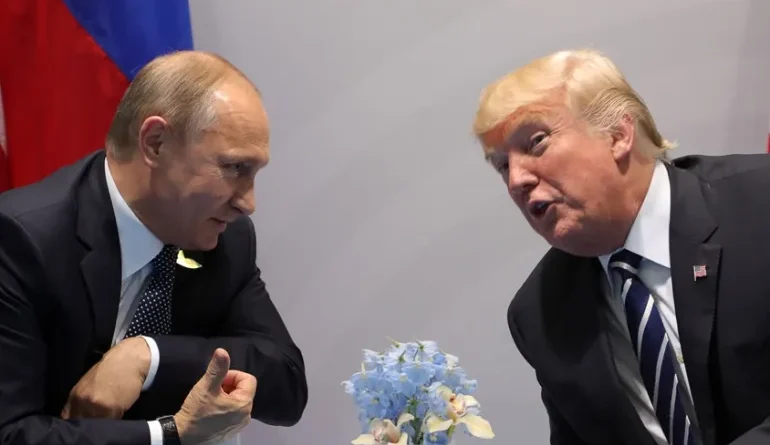Trump’s Nuclear Submarine Move Amid Rising Tensions
Donald Trump’s recent decision to reposition two US nuclear submarines has sparked global attention, raising questions about escalating tensions between Washington and Moscow. The move comes after a fiery exchange between Trump and Dmitry Medvedev, Russia’s former president and current military leader, further straining already fragile diplomatic relations.
The conflict stems from stalled peace talks regarding Russia’s ongoing war in Ukraine. Frustrated by the lack of progress, Trump issued an ultimatum, demanding a ceasefire by August 8—or face severe economic sanctions. Medvedev swiftly retaliated on social media, calling Trump’s threat “a step towards war” and accusing him of playing a dangerous “ultimatum game.” In response, Trump warned of “unintended consequences” before announcing the redeployment of two nuclear submarines to unspecified “appropriate regions.”
While Trump framed this as a precautionary measure against Medvedev’s “highly provocative” remarks, security analysts suggest it may be more of a symbolic warning than an immediate military threat. The US already maintains a formidable fleet of nuclear-powered submarines capable of striking Russia if necessary. However, the ambiguity surrounding which submarines were moved—whether nuclear-armed or simply nuclear-powered—has left room for speculation.
What Prompted Trump’s Decision?
The primary driver appears to be Trump’s frustration over the stalled Ukraine negotiations. Despite his campaign promise to end the war within 24 hours, multiple discussions with Vladimir Putin have failed to yield results. The public spat with Medvedev seems to have been the final push, prompting Trump to take a visible military step.
The two leaders have been locked in a war of words for some time. Earlier, Medvedev mocked Trump’s economic threats, suggesting he revisit “movies about the living dead” in reference to Russia’s Cold War-era “Dead Hand” nuclear retaliation system. Trump fired back, cautioning Medvedev to “watch his words” as he was entering “very dangerous territory.”
Nuclear Power Balance: US vs. Russia
The US and Russia collectively hold nearly 87% of the world’s nuclear arsenal, with both nations maintaining thousands of warheads ready for deployment. The US Navy operates 71 nuclear-powered submarines, including Ohio-class ballistic missile subs, while Russia maintains a smaller but still formidable fleet of around 30 nuclear submarines, including advanced Borei-class vessels.
Despite post-Cold War reductions, nuclear arsenals remain alarmingly high. The US currently deploys 1,419 strategic warheads, while Russia has 1,549, ensuring mutual deterrence remains a key factor in their geopolitical standoff.
Russia’s Response—or Lack Thereof
So far, neither the Kremlin nor Medvedev has directly addressed Trump’s submarine maneuver. However, Russian lawmaker Viktor Vodolatsky downplayed the move, claiming Russia controls more nuclear submarines globally and dismissing the need for an immediate response.
Putin, meanwhile, has remained measured, stating that “disappointments arise from inflated expectations” in an apparent dig at Trump’s frustrations. While he claims to seek “lasting peace” in Ukraine, there’s no sign of an accelerated resolution.
Will This Lead to Further Diplomacy—Or Escalation?
In 2017, Trump’s deployment of nuclear submarines near North Korea preceded his historic meeting with Kim Jong Un. Whether this latest move will push Putin back to negotiations remains uncertain. For now, the world watches closely as two nuclear superpowers engage in a high-stakes game of rhetoric and military posturing.
The situation underscores the delicate balance of power—and the ever-present risk of miscalculation when nuclear submarines are in play.
Go To Main Page

